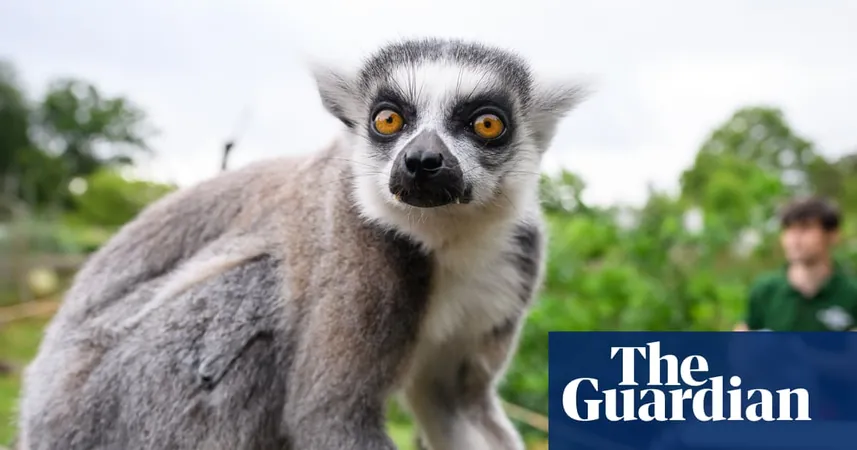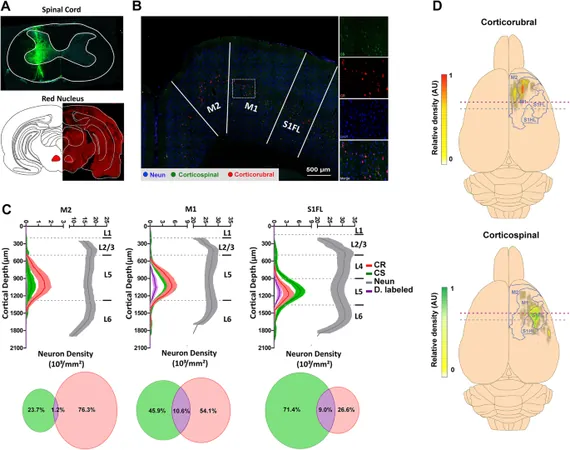
Unlocking Evolution: How Long Thumbs Reveal Bigger Brains in Primates!
2025-08-26
Author: Nur
A Surprising Link Between Thumbs and Intelligence
Have you ever thought about how our thumbs might hold the key to understanding intelligence in primates? Recent research suggests that longer thumbs are not just a quirky trait; they are closely associated with larger brain sizes in these fascinating mammals.
The Evolutionary Puzzle
This groundbreaking study, led by Dr. Joanna Baker from the University of Reading, proposes an evolutionary scenario where enhanced cognitive abilities, especially action planning, could have driven the development of manual dexterity. Dr. Baker notes, “Primates with longer thumbs likely had better success in manipulating objects, which would have been advantageous for survival.”
Chimpanzees, Lemurs, and Us: A Closer Look
Exploring data from 94 primate species, including our ancient relatives and playful lemurs, the study published in Communications Biology revealed something intriguing: humans and many hominins possess thumbs that are longer than expected based on typical primate hand proportions. When comparing brain size, it became clear that a pattern emerged — primates with relatively longer thumbs also had larger brains.
Beyond Specimens: A Broader Trend
Interestingly, once brain size is taken into account, humans don’t stand out as unique among primates. Dr. Baker emphasizes, “A longer thumb is indicative of a larger brain regardless of species, making this relationship a consistent trend across the primate family tree.” However, one exception was the early hominin Australopithecus sediba, which had an unexpectedly long thumb that points to adaptations for both tree-dwelling and ground life.
The Neocortex: The Brain's Powerhouse!
Further investigation revealed that it’s primarily the neocortex — the brain region responsible for complex cognitive functions — that tends to be larger in primates with longer thumbs. This finding was unexpected, as it was assumed that areas associated with motor control would play a more prominent role.
Could Thumb Length Define Tool Users?
However, don't rush to conclusions! This study makes it clear that thumb length alone cannot definitively indicate the use of tools. The connection between thumb size and brain size persists across all primates, irrespective of their tool-using habits. Dr. Baker remarked, “We anticipated some significant differences in hominins that just didn’t surface.”
The Bigger Picture: More Research Needed
Highlighting the limitations of the study, Dr. Fotios Alexandros Karakostis, an expert in biological anthropology who wasn’t part of the research, points out that a comprehensive understanding of human-like manual dexterity and cognitive evolution must include various anatomical traits of the hands and perform advanced biomechanical simulations.
In conclusion, while this research presents exciting insights into the evolutionary bond between thumb length and brain size, it also opens doors for further exploration into the intricate relationship between manual dexterity, cognition, and our primate ancestors.


 Brasil (PT)
Brasil (PT)
 Canada (EN)
Canada (EN)
 Chile (ES)
Chile (ES)
 Česko (CS)
Česko (CS)
 대한민국 (KO)
대한민국 (KO)
 España (ES)
España (ES)
 France (FR)
France (FR)
 Hong Kong (EN)
Hong Kong (EN)
 Italia (IT)
Italia (IT)
 日本 (JA)
日本 (JA)
 Magyarország (HU)
Magyarország (HU)
 Norge (NO)
Norge (NO)
 Polska (PL)
Polska (PL)
 Schweiz (DE)
Schweiz (DE)
 Singapore (EN)
Singapore (EN)
 Sverige (SV)
Sverige (SV)
 Suomi (FI)
Suomi (FI)
 Türkiye (TR)
Türkiye (TR)
 الإمارات العربية المتحدة (AR)
الإمارات العربية المتحدة (AR)